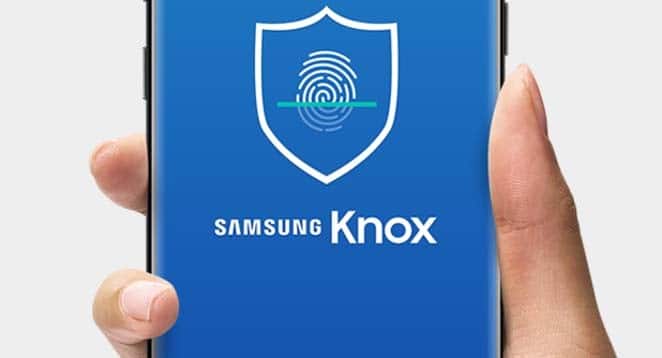Here is a complete guide on how to switch from Samsung Knox to Secure Folder- Samsung Knox is a security system included in the official update of Android 4.3 on Samsung devices. It’s a discontinued service these days, and it’s been disabled by default since the Galaxy S6 and S6 Edge, so if you have a newer phone, there’s nothing to worry about. However, some older devices still have Knox installed and activated by default. Here’s how to uninstall Knox from Galaxy devices.
What is the current status of Samsung Knox?
Samsung launched Knox in September 2013 but officially stopped supporting it in December 2017. The purpose of this security system, initially launched with Galaxy Note 3 and Galaxy Note 10.1 2014, was to offer complete protection for devices and make easier to use devices both for work and for playing in BYOD (Bring Your Own Device) environments.
Samsung has stopped My Knox in favor of the new Secure Folder app and, starting from December 2017, Knox no longer appears in the Play Store. The most recent phones, like the Galaxy S7, S8 or S9, as well as the recent Note and A series devices, do not use My Knox.
If your device has Knox, you can continue using it. Similarly, once uninstalled, My Knox can no longer be downloaded from the Play Store.
The My Knox portal still has some features. You can still unlock My Knox or reset your password on My Knox, for example. However, users are encouraged to migrate to Samsung’s new Secure Folder solution.
How to transfer data from My Knox to Secure Folder
A Samsung account is required to use the My Knox backup and restore feature. Currently, Secure Folder is compatible with devices on Android 7.0 and later versions.
- Go to My Knox Settings> Backup and Restore> My Knox Data Backup.
- Go to the Play Store and install Secure Folder. After configuration, you can restore the data you backed up from My Knox.
What were the problems with Knox?
Applications that are used outside of Knox’s realm have limited access to stored data. A number of developers, including those like Chainfire, who created the famous TriangleAway app, designed to reset the flash counter to zero on the device and SuperSU.
The problem is that the Knox security system prevents access to multiple applications once the device is rooted and can cause problems with the warranty since changes to the phone trigger the flash counter (and prevent reset).
The reason why this is controversial is because Knox works with an eFUSE (autoconfiguration technology), used to keep track of when a device has been altered. This means that Samsung may use Knox’s data to refuse user support requests during the warranty period, as it will assume that the device has been damaged by the user.
Samsung had already incorporated a counter into the bootloader, which keeps track of the number of times the operating system has been changed. The problem is that, as I said, applications that are outside the Knox container have limited access to the stored data and, consequently, the apps developed by the modding community are negatively affected.
How to disable Knox
There are several ways to disable Knox, which also allows you to use applications like SuperSU or RootChecker again.
However, it is not possible to reset the flash counter to zero because the “bit-bit guarantee” included in the official update of Android 4.3 prevents you from downgrading the bootloader.
The Samsung support page provides the following explanation, valid only for devices with Android 4.3, such as the Galaxy S3:
- Find the Knox app, launch it and tap Settings.
- Choose Knox Settings.
- Select Uninstall Knox.
- When you uninstall Knox, you will be asked if you want to back up Knox data. If you say yes, it will be saved in your device’s Knox folder during the uninstall procedure. To back up this data, select Back up now, then OK.
Note: personal data, such as photos, music files, contacts and calendar events are copied during uninstallation. However, e-mails and application data no.
- Enter your Knox password and press Continue.
- Choose Next. Your data will be saved before the uninstallation process is completed.
- Select OK to uninstall Knox.
- Touch Menu> My Files> All> Knox. There will be a zip file with your personal Knox content. If you have a microSD card, select All> Storage device> Knox.
If the option provided by Samsung has not convinced you, you can perform the following steps (requiring root access):
- Install Root Explorer.
- Run Root Explorer and in the search function of the magnifying glass, type Knox.
- Select all files with the name Knox.
- Remove them and restart the Samsung device.
If these methods do not work or you are not satisfied yet, the XDA Developers forum also provides a file to eliminate Knox through recovery:
- Back up all data from the device.
- Install the following file provided by XDA Developers: KNOX removerV2.1.zip. (Go to the page- XDA-Developers).
- Delete all files labeled as Knox.
- Restart.
What are your thoughts on Knox? A positive security solution or a nuisance? Share your opinions in the comments.

